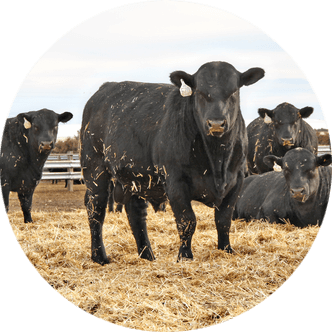Tips offered for choosing chicken breeds to produce colorful eggs
As egg prices rise due to shortages, more people are opting to raise backyard chickens for a sustainable and cost-effective supply of eggs.
In addition to providing a reliable source of eggs, backyard chickens can also produce stunningly vibrant colors to the nesting box.
From olive to blue and speckled to chocolate brown, colored eggs are trending in the backyard chicken world.
When selecting breeds for a backyard flock, it’s important to consider egg production as a primary factor. However, choosing breeds based on egg color can add variety.
With so many options available, navigating choices to find the best breed can be overwhelming.
Egg color
Genetic traits inherited from both roosters and hens determine the type and intensity of pigments, leading to distinct eggshell colors among different breeds.
In an April 2022 Texas A&M AgriLife Today article by Paul Schattenberg, Texas A&M Extension Specialist Dr. Gregory Archer states, “A good way to guess what color of eggs a chicken will lay is to take a gander at the hen’s ear lobes. More often than not, chickens with lighter earlobes also have white feathers and produce white eggs. Those with colored feathers and darker earlobes will likely produce colored eggs.”
All eggshells start white inside the hen because shells are primarily calcium, but as the hen forms the shell, pigments called porphyrins are secreted from cells within the hen’s uterus to add color, he explains.
Breeds like Plymouth Rocks and Rhode Island Reds lay brown-shelled eggs because a pigment known as protoporphyrin is deposited onto the shell. This happens late in the process of shell formation, and the pigment doesn’t penetrate the shell’s interior.
“This is why, when you crack open a brown egg, you will see the interior of most shells remains white,” Archer adds.
However, a pigment called oocyanin is deposited on the egg of the Ameraucana breed, penetrating both the exterior and interior of the shell and making them blue.
“An olive egger results from a cross between a hen and rooster from a brown-egg-laying and a blue-egg-laying breed,” he explains. “The hen produces a brown pigment which penetrates the blue shell of the egg, resulting in a greenish-hued egg. The darker the brown pigment, the more olive-colored the egg appears.”
Archer notes different shades of eggshells can also come from the same bird on different days, because the bloom – a thin protective layer put on right before the egg is laid – contains a fair amount of pigment.
The speckles found on speckled eggs are simply extra deposits of calcium and can form when the process of calcifying the egg – which shapes its shell – is disrupted.
“Another possible cause is a defect in the hen’s shell gland,” Archer adds. “Additionally, the presence of excessive calcium in the hen’s system could also lead to this phenomenon.”
Breeding for colored eggs
Poultry breeders have discovered even more unique egg colors, like deep pink or dark green, by crossing different breeds.
Each chicken carries two eggshell color genes, either dominant blue, recessive white or one of each, but breeds that lay a blue or white egg do not carry any tint overlay genes.
Research studies conclude a bird carrying “tint” genes deposits a brown overlay color over the shell of her eggs. The tint can be light cream, medium brown, terracotta or dark chocolate if certain genes are present.
However, if one parent carries tint overlay genes, all of the offspring will inherit it in some form, even if lightly.
Hens which lay blue eggs possess at least one dominant blue egg gene and no tint overlay genes, but hens which produce the most vibrant blue eggs typically carry two blue egg genes.
Breeding homozygous blue egg layers – those with two blue egg genes – will ensure exceptionally blue eggs are laid.
The easiest way to achieve this is by purchasing Whiting True Blue or Crested Cream Legbar chicks from a hatchery or true Ameraucana chicks from a reputable breeder.
On the other hand, oliver eggers are bred by crossing chocolate or dark brown egg layers with a homozygous blue egg gene rooster or a blue egg-laying hen with a rooster which hatched from a dark Marans or Welsummer egg.
Multiple egg colors can be created, including sea glass or sea foam Easter eggers, power blue, spearmint or teal.
To create an eye-catching colored egg basket, keep a homozygous blue rooster, a dark Marans rooster and a Speckled Olive Egger rooster that hatched from a unique egg, as they generally allow for unusual egg colors.
Melissa Anderson is the editor of the Wyoming Livestock Roundup. Send comments on this article to roundup@wylr.net.





